Does The Ultimate Prodigy exist within your organization? Take this insightful quiz to uncover the digital orchestration conductor personas at your company. This quiz delves into the world of digital campaign strategies and uncovers your team’s strengths, whether they excel in data-driven research, social media engagement, content creation, automation mastery, experiential design, or if you employ an adaptable and versatile master in all aspects of digital marketing.
Looking to discover the different types of digital orchestration conductors? Check out our recent blog post detailing their traits and how they can best contribute to your organization to make the most impact.
In today’s business climate, companies face fierce competition to capture the attention of their target audience. To succeed, it is crucial to leverage multiple marketing channels effectively. Four key components of a comprehensive marketing strategy are SEO, Paid Media, Social Media, and Content Development. Here at Bluetext, the integration of these marketing strategies is known as digital orchestration. In this blog post, we will explore each of these services and discuss the benefits of hiring a marketing agency like Bluetext to manage them in an integrated fashion, maximizing your business’s online presence and driving success.
Search Engine Optimization (SEO)
SEO is the practice of optimizing a website to improve its visibility and organic search rankings on search engine results pages. A marketing agency can help businesses develop a comprehensive SEO strategy, including keyword research, on-page optimization, technical SEO, link building, and content optimization. By achieving higher search engine rankings, companies can attract more targeted organic traffic, increase brand visibility, and establish authority in their industry.
Paid Media
Paid media involves running targeted advertising campaigns across various digital platforms, such as search engines, social media, and display networks. Bluetext can expertly handle the planning, execution, and optimization of paid media campaigns, ensuring maximum return on investment. By leveraging data-driven insights, audience targeting, and ad optimization techniques, businesses can reach their target audience, increase brand exposure, and drive conversions effectively.
Organic Social Media
Social media has become an integral part of modern marketing strategies. A marketing agency can manage a business’s social media presence across platforms like Facebook, Instagram, Twitter, LinkedIn, and more. They create and curate engaging content, interact with the audience, monitor brand mentions, and run targeted social media advertising campaigns. Social media management helps companies build a loyal following, increase brand awareness, drive website traffic, and foster meaningful customer relationships.
Content Development
Content development involves creating high-quality and engaging content that resonates with the target audience. A marketing agency like Bluetext can develop a content strategy aligned with the company’s goals, target market, and SEO strategy. This includes creating blog posts, articles, infographics, videos, and other forms of content. Compelling content not only attracts and engages the audience but also supports SEO efforts, drives organic traffic, and establishes the business as a thought leader in its industry.
Digital Orchestration: Benefits of Integrating Marketing Services
By hiring a marketing agency like Bluetext to orchestrate these services in an integrated way, companies can enjoy several key benefits:
- Holistic Marketing Approach: An integrated approach ensures that all marketing efforts are aligned and work together synergistically, reinforcing each other’s impact and maximizing results.
- Consistent Brand Messaging: An agency can develop a cohesive brand voice and maintain consistent messaging across all marketing channels, enhancing brand recognition and maximizing customer trust.
- Efficient Resource Allocation: Outsourcing marketing services to an agency allows businesses to focus on their core competencies while leveraging the expertise of professionals dedicated to driving marketing success.
- Enhanced Data Analysis: A marketing agency can provide valuable insights and analytics across all marketing channels, enabling businesses to make data-driven decisions and optimize their strategies for better performance and ROI.
- Cost-Effectiveness: Outsourcing marketing services to an agency can be more cost-effective than hiring an in-house team, as agencies have the expertise, tools, and resources necessary to deliver results efficiently.
An integrated marketing approach that combines SEO, Paid Media, Social Media, and Content Development can significantly boost a company’s online presence and drive success. By hiring a marketing agency that specializes in these services, businesses can benefit from a cohesive strategy, consistent brand messaging, data-driven insights, and cost-effective resource allocation. Looking for an agency to lead the orchestration of your digital marketing channels? Contact Bluetext today.
It’s common knowledge you don’t market to fit in, but rather to stand out. This used to mean simply a compelling headline, an eye-catching graphic, or a clever jingle no one can get out of their head. But as marketing mediums, standards, and placements have grown, so have the competitive stakes. While many marketers have shifted their mindsets from traditional placements (think signage, television commercials, newspaper ads) to more digitally destined formats, there is still significant value to what is known as “out-of-home” advertising, especially when all of your competitors are placing their bets on the search and social ads.
What do we mean by “out-of-home”? Well quite simply, it’s any advertising that can be seen outside of a viewer’s home. It’s one of those terms that is best described as what it’s not, aka a television or streaming ad, any digital display ad (which yes, can be viewed outside of a home setting, but besides the point). Traditionally this included billboards, buses, posters, transportation station signage, street furniture, etc. But as we mentioned, competition is fierce, and unlike the digital ecosystem physical space is limited, therefore, driving price and competition. Hence, we’ve seen a trend in companies turning to more “out-of-the-box” placements to stand out. In this post, we’ll evaluate some of the unique out-of-home finds intended to stand out and make a memorable impression on viewers.
Before we fully dive in, we must disclose that we are not advocating for the effectiveness of these ads. But rather an appreciation for the unconventionality of these strategies. In theory, advertising should hit viewers at a point of memorable positive experiences, which therefore will get associated with your brand. No wonder baseball park signage and billboards in proximity to popular vacation destinations are so popular. The viewer will remember your ad in conjunction with that great memory of a win against a rival or anticipation for a long-awaited vacation. So whether these out-of-the-box ads are associated with positive experiences is well, debatable.
Fortune Cookies:
Now here’s a neat one. Imagine you’re at your favorite Chinese restaurant and the check comes. Whether you’re superstitious or a little stitious, you must complete the standard ritual of cracking open your fortune cookie to see what awaits.
And what do you know? A little ad falls out. Now when the promotion makes sense, this actually can be quite effective. Look at Zelle for example, placing ads that specifically reference splitting a restaurant check at the exact time one may be dividing up the check amongst friends. Pretty clever call to action at a strategic time, but just make sure your audience isn’t getting jipped of the fortune they know and love.
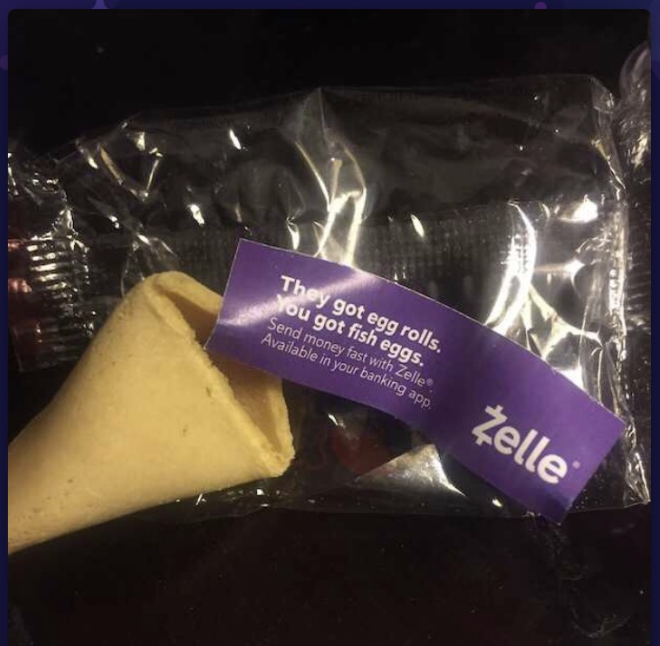
Bathroom Stalls
We must say, if there’s one place to capture a viewer’s singular eyeline and undivided attention, it’s in a public bathroom stall. What’s more in your face than a huge poster staring back at you in a public restroom? Or to really make a splash, take a cue from I Love You, Man’s urinal cake idea:
Forms Captcha:
The reCaptcha forms completion. We all love to hate it. But some brands, particularly consumer brands, have turned the obligatory submission request into a fun reinforcement of their brand messaging. Coca-Cola’s unique spin prompts a user to select an “delicious refreshing beverage” aka one of their products from the tile of images rather than unappealing taxi cars.

Kit-Kat goes a step further with an interactive element that asks users to drag a finger across their candy to “Have a break”.

Each of these examples serves to reinforce brand taglines and catch users off-guard with appetizing reminders of their product.
Airport Security Bins:
Again, the premise of scrambling with your shoes and unpacking belongings in a crowded airport security line isn’t everyone’s favorite memory of the vacation. However, branded security bins when they make sense can be a clever way to catch a viewer’s attention and make them smile. Zappos for example takes a comedic spin on the frazzled shoe removal process with a reminder that while tying up your laces may not happen in a flash, their shipping speeds will.

Gas Station Pumps:
Ever been slightly startled by a spontaneous jingle playing at the gas station pump? Yeah, us too. We must admit the logic is there. The viewer is standing face to face with the pump, undoubtedly bored and waiting for their tank to be filled. But alas, their attention is grabbed by a video ad for some product or service they weren’t previously thinking of. It could be powerful, but it could also be perceived as annoying or in these times associated with upward tick of their escalating gas price.

This electric bike example cleverly acknowledges the dread of rising gas prices by promoting a more environmentally friendly option.
Looking to stand out in your marketing activation efforts? Whether that be through out-of-home advertising or digital media avenues, get in touch with Bluetext today to determine the correct media mix given your business goals and budget.
Got milk? Not in this generation.
Anyone amongst the millennial and boomer generations recognizes the iconic tagline of the ‘Got Milk’ Milk Processor Education Program (MilkPEP) campaign. How could you not? Back when drinking dairy was hot and featuring the latest and greatest celebrity endorsements children were downing dairy like no tomorrow. And their purchasing parents were fully on board with the cow milk craze.
Check out Bluetext’s work with MilkPEP and Chocolate.
But fast forward 20 years and some may say dairy is dead. Dairy milk, at least, has been replaced in the rankings with an endless number of plant-based alternatives that promote various health benefits. According to the Pew Research Center, dairy milk consumption is down 20% among members of Generation Z — who range from ages 11 to 26. From allergy-free, vegan diets, to plain old tastes, there are infinite reasons why alternative dairy products have taken off in recent years. Whether it be soy, almond, oat, cashew, coconut, or even pistachio, the infinite varieties have flooded the marketplace with fresh-faced brands and highly competitive campaigns. Big players like Silk, Chobani, Blue Diamond, Oatly, and many more have used engaging and eye-catching brand campaigns that have ultimately won over millennial and Gen Z audiences.
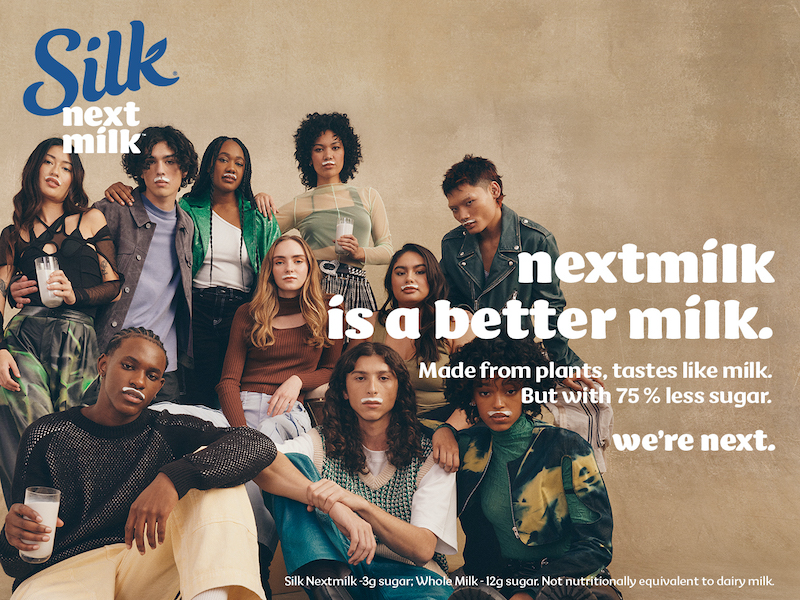
With milk drinkers dwindling, the dairy industry initiated a rebrand to bring the milk back into the fridges of American households. With the new GonnaNeedMilk campaign, the dairy industry is tapping into its legacy position and nutritional benefits as the “O.G. Sports Drink”.
Yin Woon Rani, chief executive of MilkPEP, told the New York Times: “We have to reclaim milk’s mojo…We sometimes refer to milk as the O.G. sports drink, powering athletes for 10,000 years.” Specifically targeting athletes, particularly women marathon runners, the campaign serves to remind audiences of milk’s natural protein and essential nutrients through endorsements by star athletes, fitness influencers, marathon sponsorships, and more.

Regardless if you’re team milk or team plant-based, this campaign is just one example of generational marketing and the nuances that come with every demographic. No matter what you’re selling, it’s paramount you understand your audience and the beliefs or biases they have adopted. Generational marketing uses age group segmentation to select communication tactics that each age group or generation is most likely to respond to. This can take the form of marketing channels, messages or campaign types. For example, a brand trying to reach Gen X audiences might opt for Facebook over TikTok advertising. Each generation uses technology and social media differently, and some have more brand loyalty than others. In any effective digital marketing campaign, careful time and consideration should be given to the following:
- Defining your target audience
- Sub-segmenting your audience by distinct personas
- Market research into persona behavior & decision making
- Catering messaging & channels to specific personas
- Test, evaluate, and adapt strategies
While your campaign may have a broad goal and multiple audiences, it is best to start at the highest level and then work down the funnel to refine your strategy.
For example, studies reveal Baby Boomers (1946-1964) are less comfortable with technology, therefore trend toward brands they know and trust often promoted on more traditional channels. Customer loyalty programs and emphasis on company legacy are powerful motivators. Gen X on the other hand (1965-1976) is hesitant about change and innovation, preferring proven methods and frictionless adoption. They are most responsive to campaigns that play on nostalgic feelings, word of mouth, and user testimonials. Millennials (1977-1995) were the first generation exposed to modern technology, therefore they are more comfortable with social media marketing, user-generated content, and influencer campaigns. Despite having the broadest age range and variety of interests, most millennials share a desire for authenticity and brands that promote social and environmental causes. They aren’t opposed to multi-channel digital marketing targeting but value honest reviews and brands that support causes close to their values. Last but not least, the Gen Z group (1996-present) has a reputation for being tied to their mobile devices and being the most tech-savvy. They respond most to social media marketing, especially in the form of influencer reviews & short-form video content. They seek recommendations and validation from their peers, especially through mobile apps.
With these preferences in mind, companies should always consider what outreach strategies are best fit for their user personas. And when multiple generations are thrown in the mix, it’s best to segment your campaign by platform or key messages to target these groups most effectively. For example, if you are promoting a new business software geared towards Gen X and millennial audiences you may want to run an email campaign targeting Gen X leads with the clear promotion of testimonials. But for your Millennial audience, you may want to set up a LinkedIn targeting campaign that promotes your brand values and user-generated content.
Generational marketing can take many forms. And while key differences in channels and messaging exist and should be considered, there are similarities that can bridge your marketing strategies. Honesty and integrity are characteristics that consumers look for from brands, straightforward communication, and authentic reviews from real users are effective across generations. And while present across generations, there is a growing preference for personalized experiences and one-to-one communications with trusted brands.
Looking to enhance your marketing strategy? Contact Bluetext to learn about our campaign services and how we can help optimize your marketing efforts across demographics.
Ah, Super Bowl Sunday. One of the most highly anticipated events of the year celebrated for being a uniquely American tradition drawing together viewers of all demographics from across the country. An impressive 113 million viewers, in fact, the third largest television program and highest digital viewership (7 million, talk about super-sized streaming) in history. For sports enthusiasts, it was a day to watch the Chiefs and Eagles play their hearts out for the Lombardi trophy. For Rihanna fans, it was an opportunity to enjoy a long-awaited concert from the couch. For marketing geeks, it was the night we got to see just what advertisers had paid the big bucks for — and this year, we mean big.
No matter the reason for tuning in on Sunday, the days that follow the Super Bowl are always full of discussion. Now, we’re not here to debate that holding call or relive that big half-time performance announcement. Instead, we’re taking a look at some of the main themes and most memorable moments of the Super Bowl 2023 commercials.
Lighthearted Tones & Humor
In contrast to previous years, a fun and amusing tone seemed to be the overwhelmingly popular choice for the commercials of Super Bowl 2023. This isn’t entirely surprising, given some of the current challenges facing the country and the heavy news cycle society has been stuck in lately. It seems that advertisers this year wanted to give people an escape, aiming to keep things light and get viewers laughing. As with any year, some spots tried- but failed- to nail the bit while others were clear, feel-good standouts. Our favorites? Miles Teller in Bud Light’s ‘Hold’ commercial, Ben Affleck working the Dunkin’ Drive Thru, NFL’s Run With It, and Bradley Cooper and his mom trying to make a T-Mobile commercial.
Nostalgia
Nostalgia has been a popular marketing tactic in recent years and if Super Bowl 2023’s ads are any indication, that doesn’t show signs of stopping. Several brands were willing to bet millions that nostalgia would continue to land with consumers, as tributes to classic movies, iconic TV shows, and music legends from throughout the decades made their way onto our TV screens. Alicia Silverstone returned to her role as Cher Horowitz from the movie ’Clueless’ for a Rakuten cashback promo, Serena Williams and Brian Cox starred in a ’Caddyshack’ spoof for Michelob Ultra, and John Travolta sang a rendition of “Summer Nights” for T-Mobile’s 5G Internet service over 40 years after ‘Grease’ first hit theaters. A Workday commercial featured rockstars like Ozzy Osbourne, Gary Clark Jr., Joan Jett, Billy Idol, and Paul Stanley, an Uber commercial with P. Diddy took us down one-hit-wonder memory lane, and a throwback to more recent history, PopCorners put out a spot incorporating the cult classic show ‘Breaking Bad’.
Brand Partnerships
One of the more unexpected moves we saw on Super Bowl Sunday was big-name brands teaming up for joint commercials. Will Ferrell walked through (literally) several of Netflix’s most popular original movies and shows in a commercial promoting both the entertainment giant and GM’s EVs. Beer brands also got in on the mix, with Bud Light doing a crossover with HBO’s ‘Game of Thrones’ and Molson Coors promoting not one, not two, but three of their beers all in one entertaining spot that kept viewers on their toes.
Puppies > Celebs
We’d be remiss not to include this one. Much like many years passed, a large majority of Super Bowl commercials this year were jam-packed with celebrities, with advertisers like DraftKings and the others already listed above opting for a star-studded approach. However, not even female rap legend Missy Elliot or Gen Z heartthrob Jack Harlow could capture America’s attention quite like dogs could. According to the Wall Street Journal, two of the clear fan-favorite ads of the night were Amazon’s funny and all too relatable story about a family dog adjusting to post-pandemic life, and The Farmer’s Dog commercial that had pet lovers across America melting (if not crying). The lesson here? A cute dog will trump celebrities every time.
While we can’t promise to steal the hearts of potential customers with an adorable puppy, Bluetext is no stranger to incorporating animals into brand activations that make people stop in their tracks (see our BigBear.ai work here), creating bold campaigns that grab the attention of consumers (see our Varonis work here), or producing playful ads that strike a chord with your target audience (see our Thing Tamer work here).
As a full-service digital marketing agency based in Washington, D.C., and specializing in everything from video creative direction and production to paid media planning and go-to-market campaigns, Bluetext is here for your every advertising need. Added bonus: there’s no $7 million price tag attached.
Kingston Technology is the leading global manufacturer of memory and storage solutions, but their IronKey hardware-encrypted portable data storage products were not as well known. Bluetext was specifically contracted to create a campaign that could educate the industry about the benefits of hardware encryption compared to software-encrypted, unencrypted, and cloud-based solutions. Centered around the specific hardware-based encryption, our campaign asks the rhetorical question of does anyone want their security to be ‘soft’?
The obvious answer being no, Bluetext focused the campaign concept around “Hard vs. Soft” things. Bluetext was challenged to figure out how to bring “soft” to life via 3D design. But how to memorably visualize this metaphor? A deep brainstorm by the Bluetext surfaced a quirky and nostalgic example almost anyone could relate to: Jello.
Behind the Scenes: Jiggly 3D Animation
Communicating the look and feel of Jello with its jiggly physical properties was a real technical challenge. Using Cinema 4D’s built-in Jiggle Deformer and Fracturing Objects, adding a little bit of smoothing and rendering with the built-in RedShift render engine in Cinema4D, we were able to get the look we were going for.
Jiggle Bells, Jiggle Bells
Does jiggling jello even make a noise?! We asked ourself this very question every day. We even made some jello (lime of course) and tested it out just to be sure. The answer is – not really. But that’s beside the point.
Sound design was a pivotal component of our concept. Essentially, didn’t want it to seem like the hard drive was exposing or stealing sensitive information. Also, with the international scale of this campaign (7 languages!), we couldn’t use a voiceover.
It was up to our sound designer to clarify the story of “jello safe, bad. IronKey, good.” Using a mix of digital, mechanical, tactile, and dystopian sound effects, our audio narrative both negatively reinforces software encryption and then victoriously reinforces how hardware encryption can save the day.
Designing the jello splatter portion? Let’s just say we spent some time in the “Gore” section of our sound library. I think our designer is still having some PTSD, but the end result goes hard, that’s for sure.
With 3D animation to support Kingston’s IronKey product, the campaign set out to break the mold of traditional cybersecurity campaigns. If you’re looking for some creative ways to shake up your campaign advertising strategy, contact Bluetext to learn about our video and creative services.
It’s 2022, and the term “gamer” no longer refers to teenagers playing video games in their parent’s basements. Gamers are all around us, thanks to the explosion of game formats, genres, and platforms. Roughly 40% of the world’s population admits to playing some kind of video game. The typical stereotypes of people who partake in this hobby are far from reality; 70% of gamers are over the age of 18, 46% of gamers are female, and only 2% play out of their parent’s basements (actually, we made that last stat up). Especially after the pandemic, the gaming industry has boomed and it is expected to keep booming. As online games continue to rise in popularity, marketers are recognizing the potential of advertising within gaming platforms, otherwise known as in-game advertising.
While players may have a knee-jerk reaction when they hear the term “in-game advertising,” the practice has proven extremely successful for brands. For example in 2009, Microsoft promoted Bing in a series of games, including NBA 2K10 and DJ Hero. After their first exposure to the ads, the percentage of gamers visiting and searching Bing increased by 108% according to Microsoft. Surprisingly, two-thirds of the gamers who visited Bing after seeing the ad were visiting for the first time. According to a recent study conducted by Vantage Market Research, the global in-game advertising market size is forecasted to reach USD 12.35 Billion by the year 2028. While in-game advertising (IGA) can include banners, video ads, audio ads, or mini-games, the most popular types of IGA are static ads, dynamic ads, and gamevertising. When it comes to reaching your target audience with in-game ads, the most important factors are picking the right format and gaming service to deploy ads on. Let’s quickly deep-dive into some of the options, and take a look at some of the games that reach wide demographics.
Video In-Game Advertising
It’s no surprise that video is a key format for digital advertising; dynamic, engaging content fits perfectly with what users now want to experience. When it comes to using video in games, there are multiple different ways to present short, impactful content. There are pre-roll videos, which pop up a few seconds before the gaming experience starts, and there are also rewarded videos that will give the player a reward for sticking around to watch until the end.
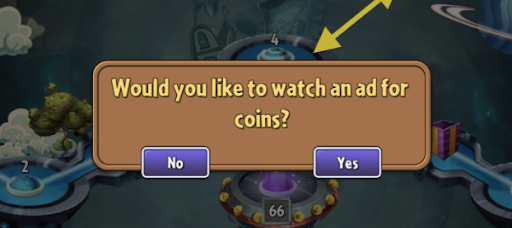
Native In-Game Advertising
Native in-game ads are arguably the most innovative in-game advertising formats of all. A brand’s key message can be directly integrated into the video game itself, creating a non-intrusive advertising experience for the user. For example, there could be an advertising banner in a sports game applied along the playing field, mimicking how the ad would appear in real life. This way, the user is exposed to advertisements in a way that does not pause or delay their playing experience whatsoever.

Audio In-Game Advertising
Audio is another form of advertising that has risen in popularity over the past few years. The music streaming platform Spotify recently released a study that showed that streaming from gaming consoles went up 61% in 2021, compared to the year before. High-tech gaming consoles such as Playstation and Xbox now include a dedicated music app, which is where in-game ads can be utilized. This format is another non-intrusive strategy that does not inhibit the game.

Picking the Right Game
From esports gamers to social gamers and casual gamers, the gaming target audience is highly diverse and offers great market potential to companies. The decision on whether to include ads is ultimately up to the game developer, so you’re less likely to see a promotion for Mountain Dew or Takis in big titles like Call of Duty or God of War. But smaller, independent games—especially those that utilize the free-to-play model—are likely to embrace in-game advertising. Here are a few options of popular video games that reach a wide demographic that could be a fit for your next in-game ad.
- Candy Crush Saga
- This popular mobile game has over 250 million users to date, with the average age range of players falling between 25 to 45 years old. The gender split is pretty even, with 46% of players being male and 54% being female. The most popular type of advertising within Candy Crush is a video and/or rewarded ads.
- FarmVille 3
- Another mobile game that originated through Facebook, FarmVille 3 is one of the top-grossing games amongst middle-aged adults, particularly females. In 2022, the third rendition of FarmVille reported over 200,000 downloads.
- Words With Friends
- A mobile game that has maintained popularity amongst older generations since 2009, Words With Friends has at least 170 million registered users.
If you’re looking to bring your digital marketing and advertising strategy to the next level, contact Bluetext. With award-winning creative services, video and digital capabilities the possibilities are endless.
Every brand is a story, and marketing is your one chance to tell it. Storytelling has always been a successful way to connect brands with their audience because it creates an experience that people want to buy into. But the unfortunate truth is most adults don’t have much availability or attention for storytime like we once did as children. Competition for consumer attention has grown with the seemingly endless information and content that bombards us daily. The solution? Cut to the chase, SparkNotes it if you will. It is most effective to be concise, and engaging, and build a feeling that a consumer can buy into through micro-storytelling.
Micro-storytelling highlights what is truly important and showcases the small ideas that make a brand unique in under 30 seconds. Create a voice for your brand. In a sea of stories, you want to stand out. Catch people’s attention with vibrant colors, and an intriguing tagline, or start your video with a hook that will engage your audience. Make them pause their scrolling and soak in your information. Connect with them so they want to buy into your brand.
With micro-storytelling, the goal is not to fit everything into one video or post but to promote many smaller pieces of content that can easily be consumed at various touch points to tell potential customers what your brand stands for. Audiences want to get through information quickly, especially if they are new customers who are not yet invested in learning more about your brand. Micro-storytelling introduces people to your brand and sparks that initial interest. It’s the perfect teaser to either engage with your brand or share your information with others. It also gives new customers a way to quickly learn more about you, by encouraging them to visit your website or follow your social media accounts.
Four Fundamentals to Help You Create Micro-Stories for Your Brand
Know Your Audience
With micro-storytelling being so concise it is important to convey a tone and message that resonates with your target audience. It is essential for brands to target specific audiences and their specific needs, with a specific message. To create a successful micro-story you must research and gather information to better understand your audience and how you can authentically connect with them. Creating a trusted bond with your customers extends beyond a simple transaction, it works to build a community.
Tap into Visuals
While text helps to tell your story, visuals are a powerful way to communicate quickly with your audience. They must be eye-catching and aesthetic, and showcase your brand or products in a way that supports your brand’s story and values.
Cut the Fluff
Think of how the information you are presenting will be received by people quickly scrolling. Keep it simple. Avoid meaningless details that distract from the overall message. Use short and simple words.
Leave Them on a Cliffhanger
Try not to be definitive with your narrative’s ending. For example, when you go to post about an upcoming event or product launch, announce it in a way that teases what is coming soon. Not only does this save space and time, but it leaves your story open for interpretation and gives customers a chance to think about your brand or come back later to find out more.
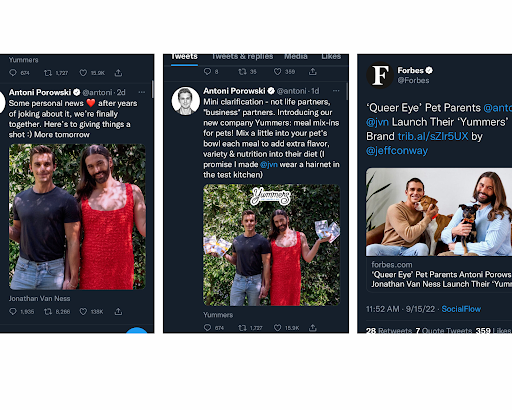
Three Effective Ways for Your Brand to Promote Micro-Storytelling
Video
One of the most powerful ways to convey your message in an engaging way is through video. Instagram stories, Tik Toks, or other short-form videos provide an opportunity to convey your story in a short time and continue telling it over time. It also gives you an opportunity to tell your story through unspoken visuals. Think of who is representing your brand. What story is being told by their appearance, tone, and body language? Even what they wear can convey something about your brand story.
Social Media Updates
Another compelling way to promote your message is through social media updates. Twitter is a really valuable tool to enforce condensed character counts, which limits brands messaging into more digestible sections. This platform is also adept at piecing content into multiple updates which can be displayed throughout your timeline. This gives users a train of thought to follow the subconscious urge to continue to scroll down and piece together multiple micro-stories.
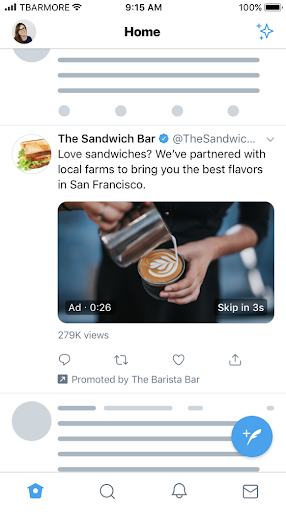
Infographics
Using infographics to tell your brand’s story creates an effective and digestible way for your consumers to get a lot of information at once. Infographics quickly highlight key takeaways using images and charts. Visuals accompanying text promote higher engagement. With important information involving statistics and facts, infographics help users absorb information with ease.
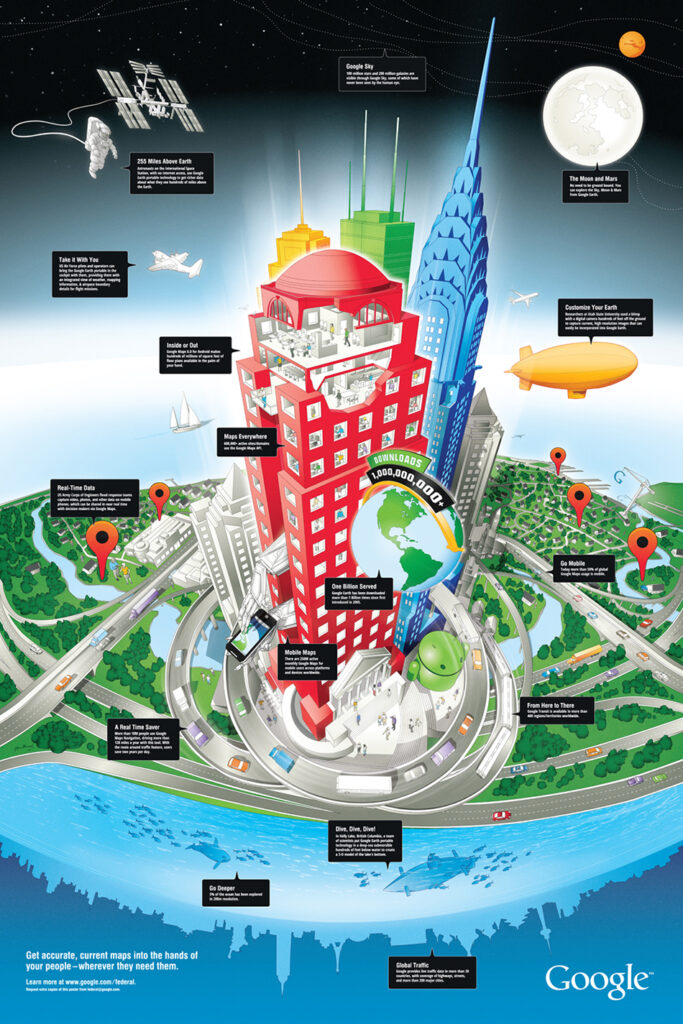
Micro-stories are just one block of the overarching brand story and when executed correctly, these micro-stories create a powerful message that resonates with consumers.
As a full-service digital marketing agency, Bluetext offers multiple services that can help your brand tailor content to meet customers’ expectations. Connect your stories to your customers. Contact us today to learn more about our messaging and content marketing services.
Picture this: the year is 2013, Twitter is exploding into the public conscious with more than 200 million active users, and Facebook has a vice-grip on people’s free time across the globe. Social media, once considered an afterthought in any brand marketing strategy, is now on center stage. A fresh frontier to engage with current and potential customers in a way that no form of advertising has done before. Any brand worth its salt hires swathes of fresh-faced analysts to form social strategy teams and capitalize on the opportunity social media marketing presents. But, as with any emerging space, the way forward is not yet clear, and many brands are hesitant to make a bold leap into the unknown. Social media strategies are conservative and in line with traditional marketing: infographics are reposted on Instagram, product launches are promoted on Twitter, and brand Facebook pages are little more than an index of ads that have already run elsewhere. Despite social media platforms’ more casual formats, brand language is still tightly controlled and diluted with formality. The marketing world might be entering a new era, but the big brands still aren’t ready to give up their old tricks.
Now flash forward to 2022: the official Wendy’s Twitter account is telling people to smuggle Frosty’s into children’s movies, Arby’s Instagram is promoting a collab with famous rappers, and Slim Jim is furiously pushing a movement called #LongBoiGang. As a rational and well-adjusted person, you might be asking yourself how we got here? The answer, my dear reader, is memes.

What is a Meme?
So what exactly is a meme? Richard Dawkins first coined the term “meme” in his 1976 book The Selfish Gene to refer to how ideas evolve and are shared across different cultures. Under this broad definition, everything from urban legends to famous sayings could be memes. But, as the Internet began to connect people worldwide, the free exchange of information accelerated like crazy. It opened the door for new methods of conveying ideas, specifically memes as we know them today.
Modern memes can be broadly defined as pieces of media that are copied (often with slight variations) and spread rapidly by internet users. From a conflicted superhero to a distracted boyfriend, these images are retitled and reused by Internet users to comment on everything from personal events to pop culture moments. But it’s not just picture templates that can become memes: halftime shows, hashtags, and even celebrities can all be the inspiration behind Internet memes.

How Memes Can Benefit Your Brand
But even after being caught up on the history that made memes what they are today, you might still be asking yourself, what can they do for me? Here are four benefits that meme marketing can bring your business.
- Expanding your Engagement – Internet users spend an estimated 145 minutes daily on social media. They’re online to scroll through their pics, jokes, and videos while tuning out everything else around them, meaning you have the chance to capture their undivided attention. Meme marketing also opens the door to even more potential impressions through functions like shares, retweets, and comments.
- Keeping Consumer Attention – Social media users are highly resistant to traditional advertising on their favorite platforms, viewing unprompted commercials and ads as intrusions, not opportunities. But by sharing memes about your brand you can seamlessly slip into their content stream and cultivate more organic user interactions.
- No Price Promotion – The most enticing aspect of meme marketing is that it doesn’t cost a thing. Although hiring social media professionals or paid influencers can do a world of good, anyone up to date on current trends can join the fun post.
- Revealing your Relatability – One of the greatest struggles many companies have with managing their brands is appearing too outwardly corporate or robotic. Memes present a perfect opportunity for brands to communicate with consumers more casually and forge more personal connections in the process.
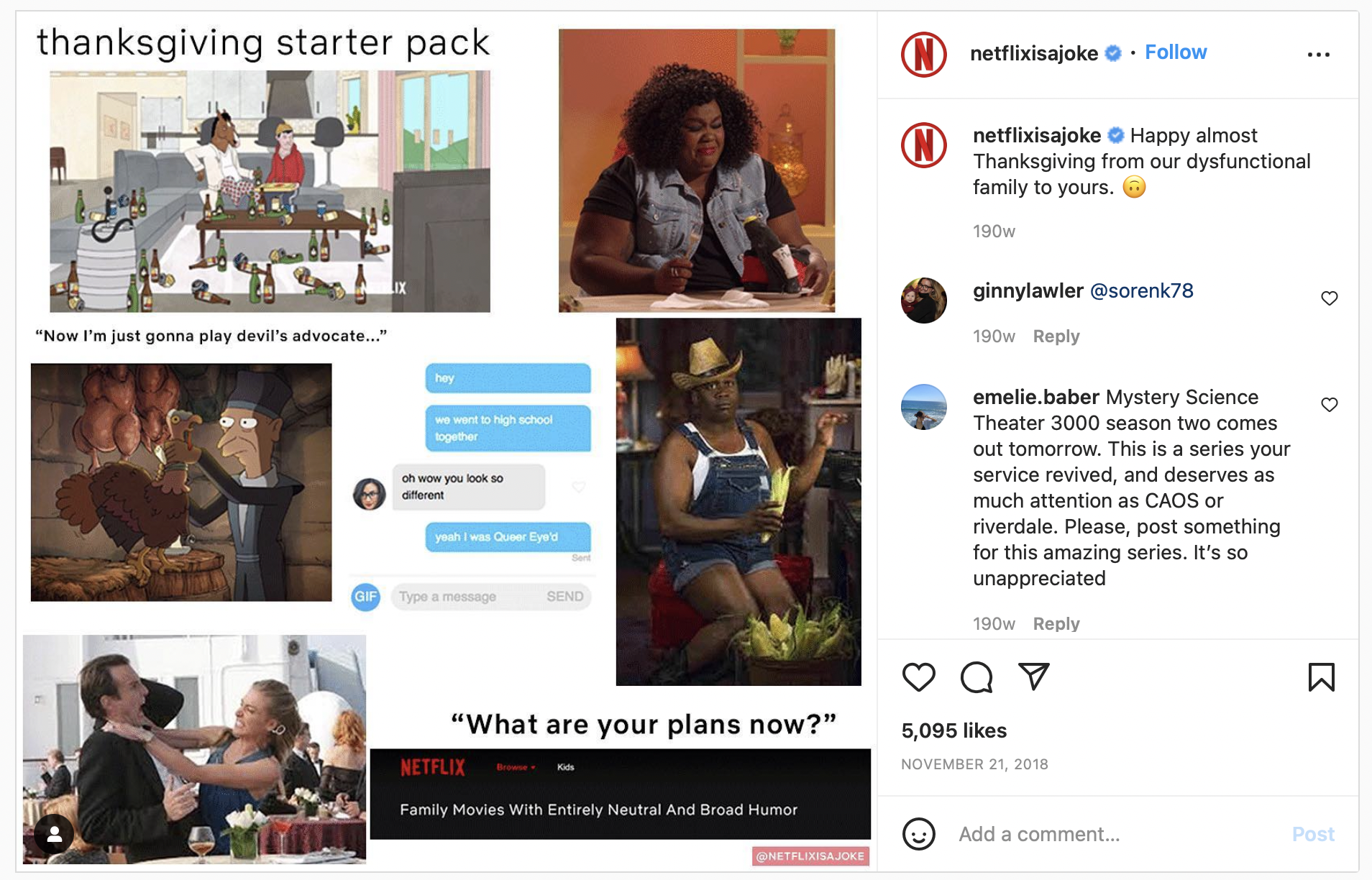
B2B Meme Marketing Inspiration
From forums like Reddit to social hubs like Twitter and Instagram, much of the content that keeps users returning to popular platforms are memes. If you want to meaningfully engage with consumers in these channels and build a social media strategy that isn’t stuck in the stone age, you’ll need to learn how to make memes. Here are a few examples of brands that succeeded in meme marketing to get your creative juices flowing!
- HubSpot – Fan favorite movies and TV shows present a treasure trove of possibilities for memes that social media users can recognize and connect with.
- RevGenius – Industry/category-specific memes can add a focused and personalized flair to your company’s social media presence.
- Adobe Marketo – Some companies even integrate memes into their trade show/event promotion like this make-your-own meme booth that Adobe Marketo featured to pump up engagement both online and at the event.
Want to take your social media strategy to the next level? Bluetext can help optimize your social media program and ensure you get the most out of your marketing.
We jumped at the idea when Phosphorus approached us here at Bluetext about creating a new campaign. After extensive brainstorming the team agreed that a video integrating animated 3D objects into real-life footage would be the best way to tell the story of the Thing Tamer. It’s a trend that’s been going on for decades, from previously cheesy CGI such as The Scorpion King (2002) to more stunning recent examples like Disney’s live-action version of The Lion King (2019). The advancements in integrating 3D animated objects into real life have come a long way! Let’s dive into some of the techniques used.
The Thing Tamer video we created consisted of animated 3D IoT office devices presented as wild creatures creeping through an office. To accomplish this, we had to carefully plan out our shoot during the scripting and storyboarding phase with the expectations of adding 3D animated creatures created in post-production. This entailed detailed storyboarding ahead of filming, then taking 360-degree spherical images of the intended 3D objects’ locations using a DSLR before creating the HDRI maps in Adobe Photoshop. While capturing 360-degree panoramic images isn’t essential, it can significantly increase the photo-realistic illumination and reflections of 3D-generated objects. HDRIs help in matching the color and lighting from the set or location to the inserted animated footage. This along with color correcting the footage to match the colors of the HDRI ensure any lighting and reflections are as realistic as possible.

Once we got our raw footage it was time to get started in Cinema 4D. After motion tracking the footage, which creates points in 3D space to use for the animated objects we placed the 3D IoT creatures in their planned locations, aligned with their relevant tracking points. From there, we modeled the movements of the creatures using their real-life counterparts as inspiration. This is where things got interesting as we had to account for the various joints of each creature. For example, we ended up using the general motion of the first black widow spider’s leg as a baseline for the other legs, then accounted for individual differences between the legs and height of the printer torso. Small details like this help sell the illusion, keeping viewers believing the object is truly part of the scene.

Once we finished adding all the objects, animation, lighting, and reflections to Cinema 4D, we were ready to render the various sequences. While there are a number of GPU-based rendering engines on the market, we use Redshift because it’s built to work seamlessly with Cinema 4D. While we also like Redshift for being fast, keep in mind that each rendered frame can take 3-5 minutes to render in high quality. So the actual render time can vary depending on the length and complexity of the shot. Thankfully, if a project has a tight timeline, you can either add additional GPUs to your rig or employ the aid of a render farm. At the end of the day, if the goal is to be as photo-realistic as possible, the project will likely lean towards the longer side.
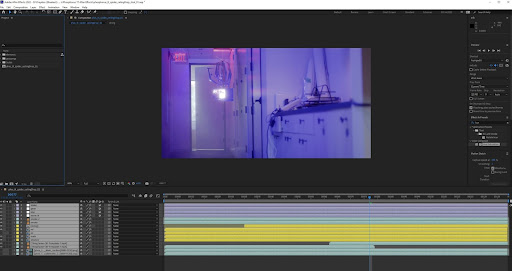

Once we finished exporting all our renders from Cinema 4D, it was time to start loading the sequences into After Effects. Once imported, we dove into layering the various sequences. Once again, this is a stage where it was vital for us to take our time to ensure the best quality. At this stage, as you work with the sequences, you may notice some issues such as particular lighting not working well with some 3D objects. So take the time to adjust the color to match the lighting of the footage. Always remember, the goal is to create a life-like 3D render that nearly or fully fools the user into believing it’s real. Any adjustments to the passes should increase the believability that the 3D objects are native to the footage. Once we were satisfied with the lighting, shadows, and reflections applied to the 3D objects, all that was left was to export the finished product. And that’s how we successfully created a film that blends live-action with 3D digital assets!
Whether you’re trying to create the next big 3D-blended campaign ad or a short teaser video, the experts at Bluetext can help. Our professional videography team is eager to identify intriguing stories to tell and how best to capture them. Want to learn more about how Bluetext can help your video needs? Get in touch with us here. To learn more about our Thing Tamer campaign, check out the full breadth of our work here.
